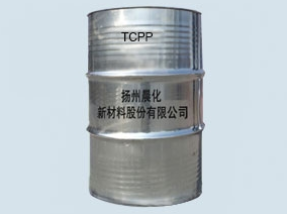Reactive flame retardants participate in the polymerization reaction as a monomer, so the polymer itself contains flame retardant components. Its advantage is that it has little impact on the service performance of polymer materials and has long flame retardancy.
Textile fibers include natural fibers, man-made fibers and synthetic fibers, among which cotton, polyester and wool fibers are used in large quantities.
Textiles have a larger fiber specific surface area because they burn more easily and fire spreads more rapidly.

The suspended fabric is flammable due to its large exposed area, and the flame can flash on the surface. All a the traditional fabric fibers are combustible, and the only difference is the flammability. With the adoption of synthetic fibers, the ignition risk of textiles is reduced.
Light fabrics made of thermoplastic fibers show a certain self extinguishing property due to the existence of droplet phenomenon, but heavy fabrics are often easy to burn due to the large adhesion of molten polymers. The actual purpose of flame retardant treatment of decorative fabrics is to delay the spread of flame and reduce the release of toxic gases.
Some nano materials have the function of preventing combustion. Adding them as flame retardants to combustible materials can change the combustion performance of combustible materials and make them fireproof materials by using their special size and structural effects. The use of nanotechnology can change the flame retardant mechanism and improve the flame retardant performance. Due to the small particle size and large specific surface area of nanoparticles, their characteristics such as surface effect, volume effect, quantum size effect and macro quantum tunnel effect provide new ideas and ways for the design and preparation of high-performance and multifunctional new materials.
Microencapsulation is a new technology developed in recent years. The essence of microencapsulation is that the flame retardant is crushed and dispersed into particles, encapsulated with organic or inorganic substances to form microencapsulated flame retardant, or the flame retardant is adsorbed in the gap of these inorganic carriers with inorganic substances with large surface as the carrier to form honeycomb microencapsulated flame retardant. Microencapsulation of bromine environmental flame retardants has the following advantages: it can improve the stability of flame retardants; It can improve the compatibility between flame retardant and resin and improve the reduction of physical and mechanical properties of materials; It can greatly improve the properties of flame retardant and expand its application range.
Additive flame retardants are added to the polymer by mechanical mixing method to make the polymer flame retardant. At present, additive flame retardants mainly include organic flame retardants and inorganic flame retardants, halogen flame retardants (organic chloride and organic bromide) and non halogen flame retardants.
Organic is some flame retardants represented by bromine, phosphorus nitrogen, nitrogen, red phosphorus and compounds, and inorganic is mainly antimony trioxide, magnesium hydroxide, aluminum hydroxide, silicon and other flame retardant systems.